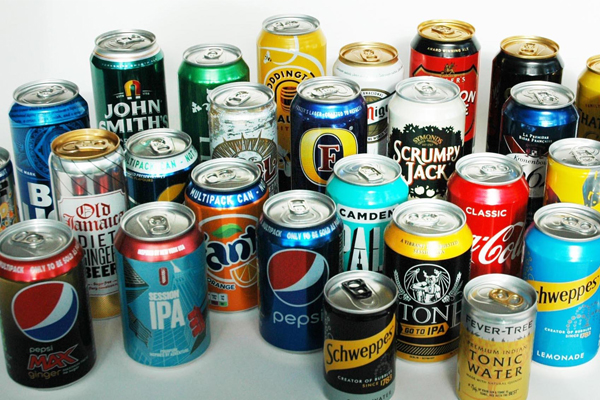Exploring the Career Cluster for Hair Stylists: Pathways, Opportunities, and How to Get Started
Understanding the Career Cluster for Hair Stylists
Hair styling is more than an art-it’s a professional path that sits within a structured framework of career clusters. In the United States, hair stylists , also known as hairdressers or cosmetologists , are classified under the Human Services Career Cluster . This cluster addresses careers focused on supporting families and meeting human needs, with personal care services as a core component [1] [2] [3] . Understanding this structure provides clarity on educational requirements, career pathways, and advancement opportunities.
The Human Services Career Cluster: A Foundation for Personal Care Careers
The Human Services Career Cluster encompasses professions that serve individual and community needs, such as social work, counseling, and, notably, personal care. Within this cluster, Personal Care Services is the primary pathway for those entering the hair care and cosmetology fields. The pathway includes roles like hair stylists, barbers, estheticians, and nail technicians [3] [2] . As a hair stylist, you will be part of a field that combines creativity, customer service, and technical expertise, with a focus on enhancing client appearance and confidence.
Required Training and Credentials
To pursue a career as a hair stylist, formal education and licensing are typically mandatory. Most states require completion of a state-approved cosmetology program , which may be offered at community colleges, vocational schools, or specialized beauty academies. These programs generally cover haircutting, coloring, styling, chemical treatments, sanitation, and client communication. After completing the program, candidates must pass a state licensing exam, which usually includes written and practical components [5] .
If you’re considering this career, you can start by researching accredited cosmetology schools in your area. Contact the state board of cosmetology for information on approved programs and licensing requirements, as these may vary by state. Many boards provide downloadable candidate handbooks and checklists for the application process.
Career Pathways and Advancement Opportunities
The human services cluster offers a variety of pathways for growth. As a hair stylist, you could advance to roles such as salon manager, educator, or business owner. Specializations such as colorist, bridal styling, or hair extensions can further distinguish your services. Some stylists expand their expertise into esthetics or nail technology for a broader client base.
Real-world examples demonstrate this flexibility: Many successful salon owners began as entry-level stylists, building clientele and reputation over time. Others choose to teach at beauty schools or work as sales representatives for professional product lines. Each step may require additional certifications or experience, so staying informed about state regulations and industry trends is crucial.
Industry Trends and Job Outlook
The demand for personal care services, including hair styling, remains robust. According to workforce data, employment for hairdressers, hairstylists, and cosmetologists is projected to grow consistently in the coming decade, driven by population growth and increased interest in personal appearance [1] . New trends-such as eco-friendly salons, advanced hair treatments, and digital booking-create opportunities for professionals to differentiate themselves and increase earning potential.
While the field is competitive, those who invest in ongoing education and build strong client relationships tend to thrive. Many organizations and professional associations offer workshops, advanced classes, and networking events to support career growth. You can find these by searching for “cosmetology associations” or “hair stylist professional development” in your region.
Step-by-Step: How to Become a Hair Stylist
To help you embark on this career path, here is a practical, step-by-step guide:

Source: ar.inspiredpencil.com
- Research State Requirements: Every state has specific licensing rules. Visit your state’s board of cosmetology website or call their office for up-to-date details. Look for an official state government site-these typically end in “.gov”.
- Choose an Accredited Program: Find a state-approved cosmetology school. Reach out to admissions counselors for curriculum details, tuition, and financial aid options. Some programs may offer job placement support.
- Complete Required Training: Fulfill the minimum training hours-usually ranging from 1,000 to 2,000 hours, depending on your state. This includes both classroom instruction and hands-on practice.
- Pass the Licensing Exam: Register for the state exam after completing your coursework. The exam typically includes both written and practical sections to assess your knowledge and skills.
- Seek Employment or Apprenticeship: Apply for entry-level positions in salons, spas, or as an apprentice. Use job boards, school career centers, and networking events to find openings.
- Continue Professional Development: Stay current by attending advanced training, workshops, and industry events. This can help you learn new techniques and expand your service offerings.
If you encounter challenges-such as financial constraints or balancing work and study-consider part-time programs, evening classes, or applying for scholarships. Many schools and industry associations offer financial aid; contact them directly for eligibility requirements and application procedures.
Alternative Pathways and Related Careers
While most hair stylists follow the standard cosmetology school route, some states may allow apprenticeships as an alternative way to gain experience and qualify for licensure. Apprenticeships typically involve supervised, on-the-job training and may take longer than traditional schooling. To explore this option, contact your state’s workforce development agency or local salons that participate in apprenticeship programs.

Source: wallpapers.com
Beyond hair styling, related careers in the Human Services cluster include esthetician, nail technician, massage therapist, and salon coordinator. Each role has unique training and licensure requirements but shares a focus on personal care and client service [3] [2] .
How to Access Opportunities and Resources
To maximize your chances of success, use a multi-pronged strategy:
- Networking: Attend local cosmetology events, join professional associations, and connect with industry mentors. These relationships can lead to job opportunities and valuable advice.
- Job Search: Use verified job boards like Indeed, Glassdoor, and the career center at your cosmetology school. For government data on the profession, reference the O*NET Online database [5] .
- Continuing Education: Many states require periodic license renewal with proof of continuing education. Check with your state licensing board for approved courses and renewal deadlines.
- Business Ownership: If you aim to open your own salon, research small business resources through your state’s Small Business Development Center or the U.S. Small Business Administration. They can guide you on licensing, business planning, and financing.
If you are unsure where to begin, you can search for “cosmetology licensing [your state]” or contact your local community college for program information. For industry standards and best practices, consult the Professional Beauty Association or similar organizations; search for their official websites for accurate, up-to-date resources.
Key Takeaways
Hair stylists are firmly embedded in the Human Services Career Cluster , with a focus on Personal Care Services . This structure offers a wide range of opportunities for career growth, specialization, and entrepreneurship. By following state-specific guidelines, investing in education, and leveraging professional networks, you can build a rewarding career that combines creativity, skill, and human connection.
References
- [1] My Texas Future (2023). Hairdressers, Hairstylists, and Cosmetologists Career Cluster Overview.
- [2] OSPI (2023). Human Services Career Cluster and Pathways (PDF).
- [3] Advance CTE (2025). Healthcare & Human Services Career Cluster (PDF).
- [5] O*NET Online. Hairdressers, Hairstylists, and Cosmetologists Occupational Details.



